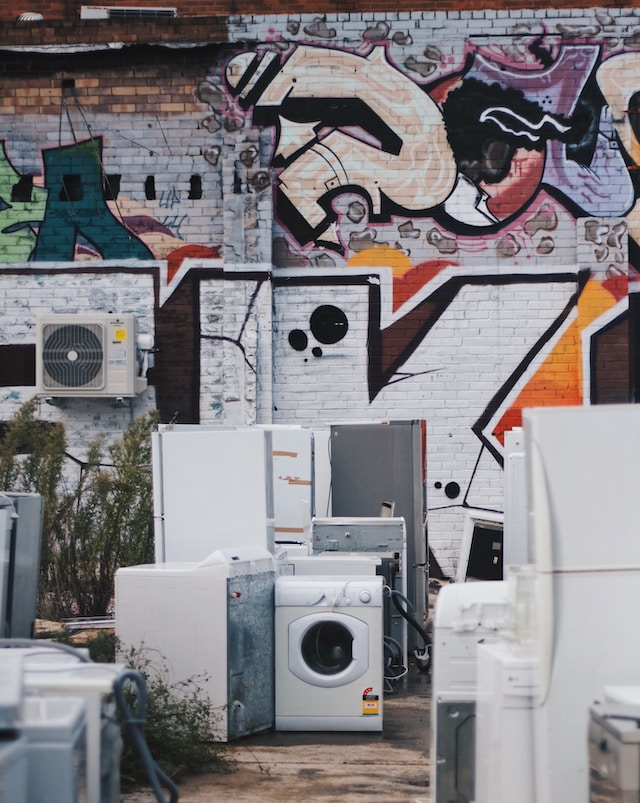Refrigerators contain refrigerant (which contains ozone-depleting chemicals) & insulation (which uses ozone-depleting materials). It is important to prioritize environmental sustainability when disposing of refrigerators.
Contact your local waste management facility, appliance retailer, or bounty program to find the best way to recycle or dispose of your refrigerator. Here are five steps to do so responsibly: 1. Unplug the refrigerator.
Unplug the Refrigerator
Unlike other large appliances, refrigerators contain a working chemical refrigerant that must be handled and disposed of properly to avoid environmental harm. If improperly handled, the refrigerant could cause harm to the ozone layer and other natural resources.
Before beginning the process of dismantling and disposing of your old fridge, unplug it so that you can prevent electrical hazards. It’s also important to empty it and remove any food items.
Next, identify the different metal components and their locations. This will help you sort them out for recycling purposes later on. Lastly, prepare a container for scrap metal. This will make it easier for you to keep track of small parts, screws, and clips during the disassembly process. You can use a trash bin, designated scrap metal container, or bucket.
Remove Food
Refrigerators contain food and other household items. These should be removed before you dispose of your refrigerator. This will help ensure that your fridge is free of spoiled or questionable food and other odors, which can be difficult to remove once set in.
Moreover, a clean refrigerator will be easier to move around and help prevent back strain during disposal. Consider using a dolly to help lift and move the refrigerator.
Contact your local waste management company or municipality to learn about refrigerator recycling Sussex County, NJ, options. They may offer scheduled pick-ups or designated drop-off locations for appliances. In addition, they can direct you to the EPA’s Responsible Appliance Disposal (RAD) program. This can connect you with partners that will recycle your refrigerator and ensure that the refrigerant is disposed of properly.
Clean the Refrigerator
The refrigerator contains bacteria and other contaminants that can make people sick. It would help to clean the fridge before disposing of it to avoid contaminating your food.
Remove shelves and drawers and soak them in warm water and mild detergent. Scrub all surfaces, paying special attention to stains and smudges. Dry the drawers and shelves and reassemble them.
If you have stubborn stains, try the Magic Eraser. Wet the eraser sponge and rub it vigorously over the stain.
Clean the condenser coils on the back or underneath the refrigerator (depending on your refrigerator type). The coils help disperse heat so the fridge stays cool.
Schedule a Pick-up or Delivery
When you are ready to dispose of your refrigerator, check with local government programs, recycling centers, and waste management facilities. Some provide free or subsidized disposal options, and others may charge a fee.
Look for recycling programs that specialize in appliances and specifically mention refrigerators. These are the best options for responsible and eco-friendly appliance disposal.
Appliance recycling typically involves recovering refrigerant, removing hazardous components, and shredding evacuated appliances. Metal components are recycled, while plastics and polyurethane foam insulation go to landfills, where they decompose. The blowing agent in the foam insulation is released into the air during decomposition, contributing to ozone depletion and climate change.
Some retailers offer a pick-up or drop-off service for large appliances like refrigerators and room air conditioners. This may cost more, but it saves you the trouble of transporting and lifting such a heavy item.
Secure the Refrigerator
Fridges contain some hazardous materials, including refrigerants, foam, mercury, oils, and polychlorinated biphenyls (PCBs). Refrigerator disposal is vitally important to the environment. It reduces harmful emissions and waste in landfills. It also promotes reuse and the economy by reducing the need for new products manufactured from virgin materials.
Before arranging a pick-up or drop-off with your local recycling center:
- Take a few precautions to ensure safe and proper refrigerator disposal and recycling.
- Clean the fridge completely, and remove any food or other items left inside.
- Tie or remove the doors to prevent children from playing in the fridge or getting hit by flinging doors.
- Transport the fridge safely and securely in a vehicle with adequate space.







